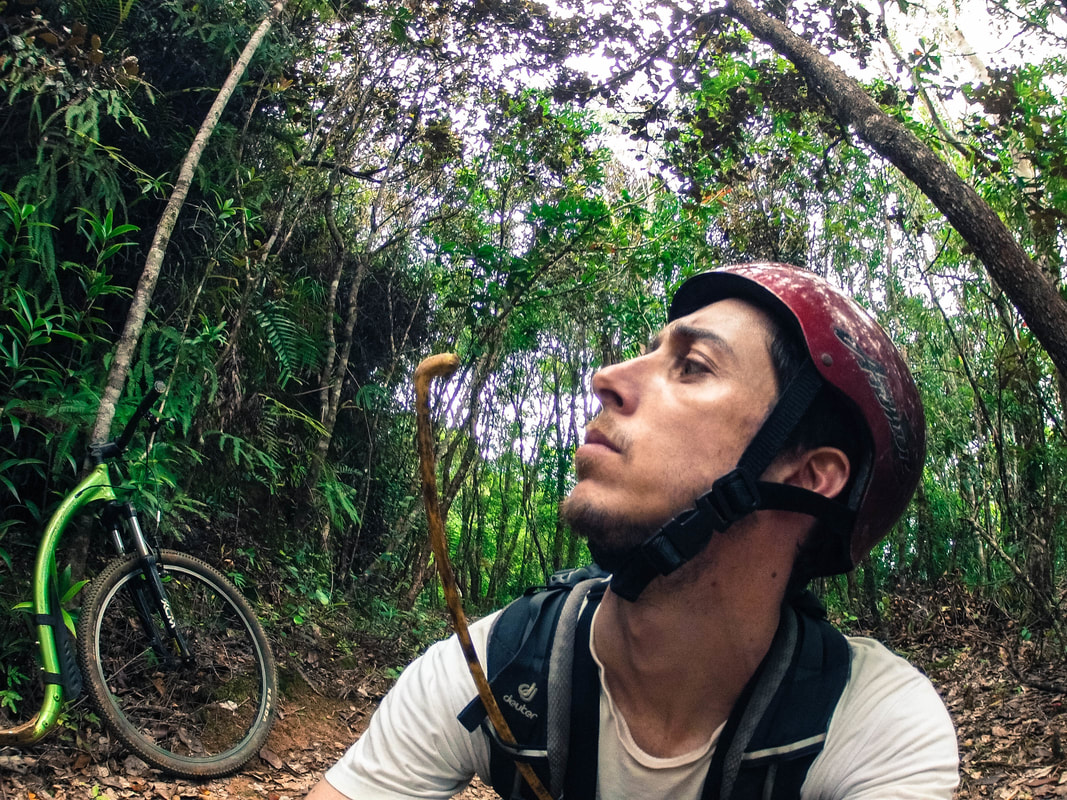I see ecohydrology as studying the reciprocal links between living organisms and terrestrial water pathways, with big questions such as: Where do organisms get their water? How do we tell? Where do humans come in the picture?
What are your undergraduate and graduate degrees in?
I have a B.A. in general engineering, a M.Sc. in physics, and a Ph.D. in Meteorology and Physical Oceanography of the Environment.
How did you arrive at working in/thinking about ecohydrology?
In a nutshell, it has been a story of trial and error! As a child I was soon interested in understanding the physical world around me, as well as concerned by how human societies could exist / develop without destroying it. However, I also had the problem of being fascinated many other topics and disciplines (scientific or not) without the ability to choose one in particular, even for a tentative undergraduate path...
Like quite a few other undecided high school students in France, I enrolled in the “classes préparatoires”, leading to an engineering school. During that time, I surely ingurgitated a lot of fundamental and applied Science there (except for life sciences, to my later regret), but without much time for hindsight or profound, critical thinking. Then I realized engineering was not my thing, but luckily there was a double degree program with universities in Japan, a culture I had been attracted to for a long time. Ten thousands of kilometers later, as a master student I started connecting some dots between plasma physics and my interest in “cleaner” energy production. While my routine back then was whispering me academic research could definitely be my kind of dream job, something remained nonetheless unsatisfying in how I could make my work directly connected to more ideological endeavors. This is why I then started a PhD in ecosystem modelling: if I could not help design a novel, sustainable energy production system, then I would dedicate myself to study this Nature I love so much!
From my background in physics, I always kept a tendency to think in terms of exchanges between systems, back then applied to how plant phenology drives the terrestrial carbon cycle. After this belated “eco” introduction, the “hydro” side really came with this crucial encounter with Esteban Jobbágy as a postdoc at the University of San Luis in Argentina. My interactions in his group and my work on analyzing flooding cycles made me realize how these extremes events could be related to land management practices (such as converting pastures to crops) and would in turn affect ecosystem functioning in entire landscapes. And I appreciated the diversity of approach I could take, from conceptual studies to addressing very applied societal problems. More than enough for me to find ecohydrology stimulating ever since!
What do you see as an important emerging area of ecohydrology?
I agree with the other “leaves” here that urban ecohydrology has a lot of potential to help addressing pressing issues given the increasing footprint of cities on the planet, and this field indeed seems to become a “hot” thing at the moment. I also think that emerging efforts in upscaling reasonably-known plant-water strategies at large spatial scales will help understanding how ecosystems organize and could interact with environmental change. That includes the eco-climatic teleconnections where patterns of atmospheric water circulation are key. Finally, I am enthusiastic to see the “eco” of ecohydrology gradually expanding from plants to integrating animals and fungi in the picture, as they can be active players in hydroecosystem functioning. Of course, as an emerging interdisciplinary field, many potential area of research remain to be unveiled!
Do you have a favorite ecohydrology paper? Describe/explain.
They are quite a few I like, but one that quickly comes to my mind is ‘A method of determining rooting depth from a terrestrial biosphere model and its impacts on the global water and carbon cycle’ by Axel Kleidon and Martin Heimann, published in Global Change Biology in 1998. They inferred rooting depth using global meteorological datasets and applying an evolutionary principle: plants evolved to have an optimal root profile (i.e., that maximizes their productivity) given the local water resources (precipitation supply and evaporative demand). Not only it resulted in some consistent agreements with field-based studies, but applying this new “database” to a simple ecosystem model had a dramatic impact on estimating partitioning between evapotranspiration and runoff. In particular, their approach seemed to confirm the observation that deeper roots are needed to explain the observed sustained productivity in relatively wet regions with a dry season like parts of the Amazon basin. On a personal level, I reckon this neat paper passed on to me this idea of considering the short-term variations in the water balance (and not only annual budgets) when thinking about ecosystem behavior and water transfers in the landscape, as well as trying to use simple conceptual tools whenever possible!
What do you do for fun (apart from ecohydrology)?
Circus and dance both (literally) balance my daily life! My circus practice now focuses on corde lisse (also called aerial rope or free rope), mostly solo training and preparing performances, but I also love teaching it at the local circus centre. While I perform and sometimes choreograph for one-off dance projects (contemporary and physical theatre) as well, I just like moving in general, and Contact Improvisation is my favorite form of dancing: it’s amazingly playful, social, emotional and accessible to everyone. Finally, when I find time to escape the city I enjoy exploring the beautiful, peaceful landscapes of Scotland on a hike or a bike ride/tour, although recently it happened much less often then I’d like to admit!

 RSS Feed
RSS Feed